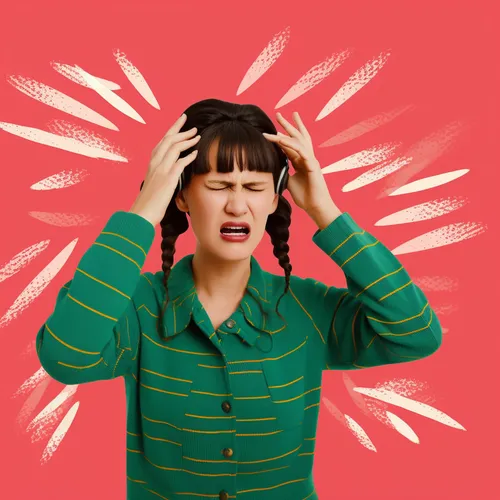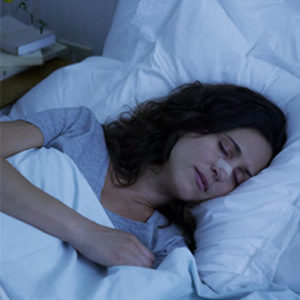What is a Migraine?
Migraine is a condition that causes intense and pulsating pain on one side of the head. A migraine attack can last from 4 to 72 hours, resulting in exhaustion for the individual afterwards.
There are two main types of migraine:
- Migraine without aura (common migraine)
- Migraine with aura (classic migraine) – The aura refers to sensory disturbances just before or during a migraine attack. These can include visual problems like flashing lights, blind spots or blurry vision. Other aura symptoms can include tingling, speech problems and confusion. About 1 in 5 people with migraines experience aura symptoms.
What Causes Migraines?
Migraines are caused by changes in the blood vessels surrounding the brain. The symptoms occur when these blood vessels constrict and then expand. It’s not completely understood why this happens, but migraines do seem to run in families. Around 70% of sufferers have a family history of migraines.
Migraine Symptoms
As well as a severe headache, migraines have several associated symptoms including:
- Increased sensitivity to light and sound
- Nausea and vomiting
- Drowsiness
- Dizziness
- Temporary vision loss or flashing lights
- Tingling sensations or numbness
Symptoms can vary between migraine attacks. Some people experience warning signs like food cravings, mood changes or neck stiffness.
The location, intensity and quality of migraine pain can differ between attacks and individuals. Some people describe throbbing pain, while others experience a constant ache and tightness.
Diagnosing Migraines
Migraines are usually diagnosed by a doctor asking about your symptoms. They may ask you to keep a headache diary to identify any triggers or patterns. Sometimes other tests are needed to rule out conditions like stroke, meningitis or headaches caused by an underlying condition. But for most people, a detailed headache history is enough for a migraine diagnosis. Doctors will try to rule out secondary headaches caused by infection, medication overuse or underlying conditions like giant cell arteritis. Migraines have no definitive diagnostic test.
Treating Migraine Attacks
When a migraine attack starts, it helps to stop what you’re doing and rest in a quiet, dark room. Over-the-counter painkillers like paracetamol or ibuprofen can provide relief when taken early on. Your doctor may prescribe specific migraine medication to take as soon as symptoms begin. These work best when taken at the first signs of an attack.
Preventing Migraines
Identifying and avoiding potential migraine triggers can help reduce the number of attacks. Common triggers include:
- Stress
- Hormonal changes
- Lack of sleep
- Dehydration
- Certain foods like chocolate, cheese and caffeine
- Alcohol, especially red wine
- Flickering lights
Keeping a diary can help identify your unique triggers. Since triggers are different for everyone, it takes some detective work to sort out which ones to avoid.
Preventative medication may be recommended if you have migraines frequently, such as 2 or more attacks per week. Your doctor may ask you to take preventive medication if you suffer from headaches at least once or twice a week. If your migraine is triggered by a certain factor, and you’re able to identify it, you can prevent it from occurring in the future by avoiding the trigger completely.
Self-care tips for migraine
In addition to medical treatments, there are several self-care techniques that can provide relief from migraine symptoms:
Rest in a dark, quiet room
Light, sounds, and smells can worsen migraine pain. Retreating to a darkened, silent room can help ease symptoms.
Apply a cold compress
Applying an ice pack or cold compress to your head or neck can help constrict blood vessels and reduce inflammation. Make sure to wrap the ice in a towel rather than applying it directly.
Stay hydrated
Dehydration can trigger or worsen migraines. Sip water slowly, along with drinks containing electrolytes like coconut water or sports beverages. Avoid caffeine and alcohol which can promote dehydration.
Use essential oils
Some people find inhaling lavender, peppermint or eucalyptus oils provides relief. Or try applying diluted oils on the temples. Always mix oils with a carrier oil before applying to skin.
Try acupuncture
There is some evidence that acupuncture can help prevent migraine attacks or reduce their severity and duration. It may work by releasing painkilling endorphins in the brain.
Exercise regularly
Aerobic exercise such as brisk walking, swimming or cycling may help reduce migraine frequency for some people. But avoid intense workouts during a migraine attack.
Get enough sleep
Lack of sleep is a common migraine trigger. Most adults need 7-9 hours per night. Go to bed and wake up at consistent times and limit screen time before bed.
Consider supplements
Some supplements including feverfew, magnesium, riboflavin (B2) and coenzyme Q10 may help prevent migraines. Check with your doctor before starting any new supplements.
Keeping a migraine diary where you track symptoms, triggers and treatments can help you discover the most effective remedies and preventive strategies for your particular migraines. Be patient – finding the right treatment approach takes time. But being proactive with self-care alongside medical therapy can dramatically improve quality of life.
Photo “Migraine!!” by Anthony Cunningham for Zoom Health
Zoom Health is a leading UK supplier of Home Health Tests and Earplugs
You May Also Like:





